If you’re not using multiple sales channels, you’re leaving much money on the table. Imagine we’ve got a toolbox with exactly 9 tools designed specifically for getting your items noticed by people who can’t wait to buy them.
I know what you’re thinking – “But I’m already selling on my website!” That’s great, but why stop there? Dive into different channels, and you’ll start seeing more customers, and your earnings will take off.
Whether you run a cozy little shop or crack the marketing code, now’s your chance to think creatively about how you sell. Trust me, your bank account will thank you later.
PERSONAL FAVORITES

B2B Sales Channels
This is one of the most effective sales channel out there.

Organic and Paid Social Media
In line of this generation's current trend, social media can have a great impact on boosting sales.
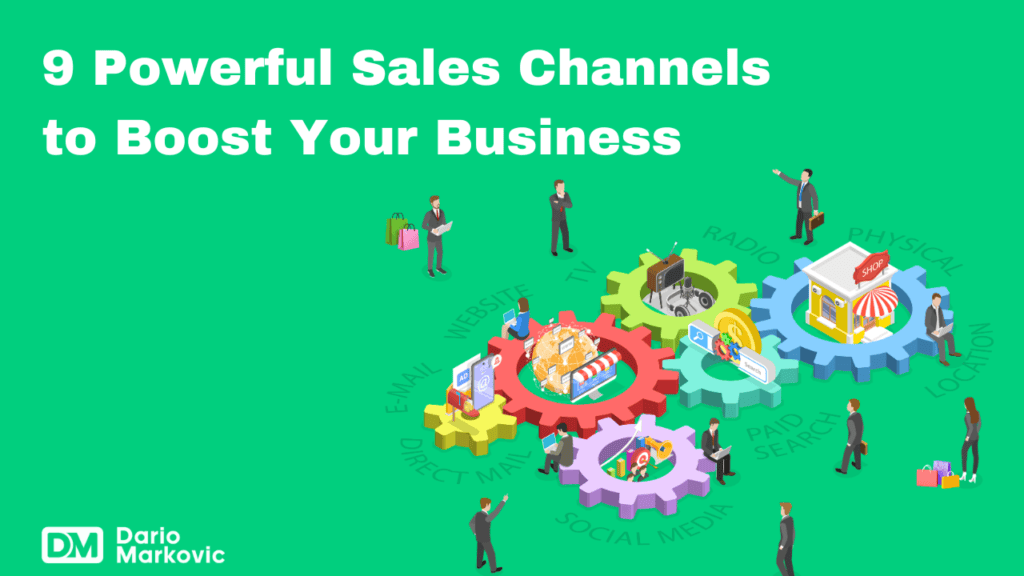
What Are Sales Channels?
Sales channels are the places you offer your products or services to reach your customers. They can be direct, such as your website or marketplace, or indirect, such as distributors and affiliates.
Depending on your business model, some organizations do business over a single sales channel. Others use multichannel strategies to meet the needs of their customer base across several different sales channels.
The channels you use in the sales process can make a significant difference, whether for indirect or direct sales to your end customers. 44% of B2B buyers say they won’t do business with a company if it isn’t active on its preferred marketing channels, which can make the job of your sales force even more challenging.
The channels used will also impact your marketing strategies. For example, targeting direct-to-consumer eCommerce will take a different approach than B2B sales to a small business or enterprise company.
How your marketing and sales team approach customers and close deals will change, as will how you use your customer relationship management (CRM) software and the metrics your sales reps track.
9 Types of Sales Channels to Consider for Your Business
Let’s examine some of organizations’ most common sales channels to sell their products and services. In no particular order, here are 9 sales channels brands use today.
1. Brick-and-Mortar Retail Sales
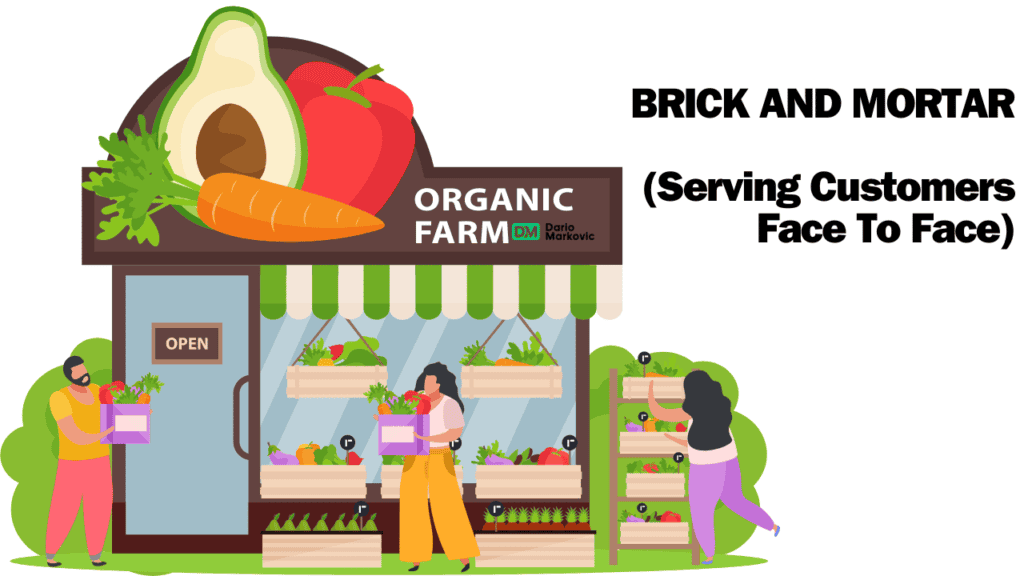
You choose a retail sales strategy if you open your storefront to sell your product or service. Grocery, clothing, convenience, and discount stores–among many other store types–are all different retail stores. Let’s explore some of these types below.
Types of Brick-and-Mortar Retail Sales
Brick-and-mortar retailing includes many types of stores that meet various needs and tastes of customers. Some of the common types with examples are as follows:
- Department Stores
Large retail stores that sell many kinds of merchandise; some are even divided into separate departments like clothes, electronic goods, furniture, and cosmetics. They mostly offer a one-stop shopping experience.
Examples:
- Macy’s: Known for a wide variety of products and annual events like the Thanksgiving Day Parade.
- Nordstrom: Focuses on high-end fashion and exceptional customer service.
- J.C. Penney: Offers affordable clothing, home goods, and cosmetics.
- Specialty Stores
These are retailers who focus on one category of products, offering great depth of assortment in that category. Normally, they offer expert advice and a high level of customer service.
Examples:
- Foot Locker: Specializes in athletic footwear and sportswear.
- Sephora: Focuses on cosmetics, skincare, and beauty products.
- GameStop: Specializes in video games, consoles, and gaming accessories.
- Specialty Stores
Large stores, individual-service grocery shops with a wide variety of foods and household goods, are arranged into aisles that make for easy walking through them.
Examples:
- Kroger: Offers a wide range of groceries and household items.
- Safeway: Known for fresh produce, bakery items, and a variety of grocery products.
- Publix: Provides a broad selection of groceries, including organic and specialty items.
- Specialty Stores
These are small shops that sell small ranges of groceries, items that can be consumed like snacks and beverages, and some toiletries. They mostly operate in high human traffic areas where a quick stop and shop would be convenient.
Examples:
- 7-Eleven: Provides a variety of convenience items, often open 24/7.
- Circle K: Offers snacks, beverages, and basic household items.
- Wawa: Known for its fresh food offerings, including sandwiches and coffee.
How to use this channel in your sales strategy: Opening a brick-and-mortar retail store requires a property lease, local ordinance approvals, on-site staffing, scheduling product ordering, delivery, stocking, and more.
2. Traditional and eMarketplaces
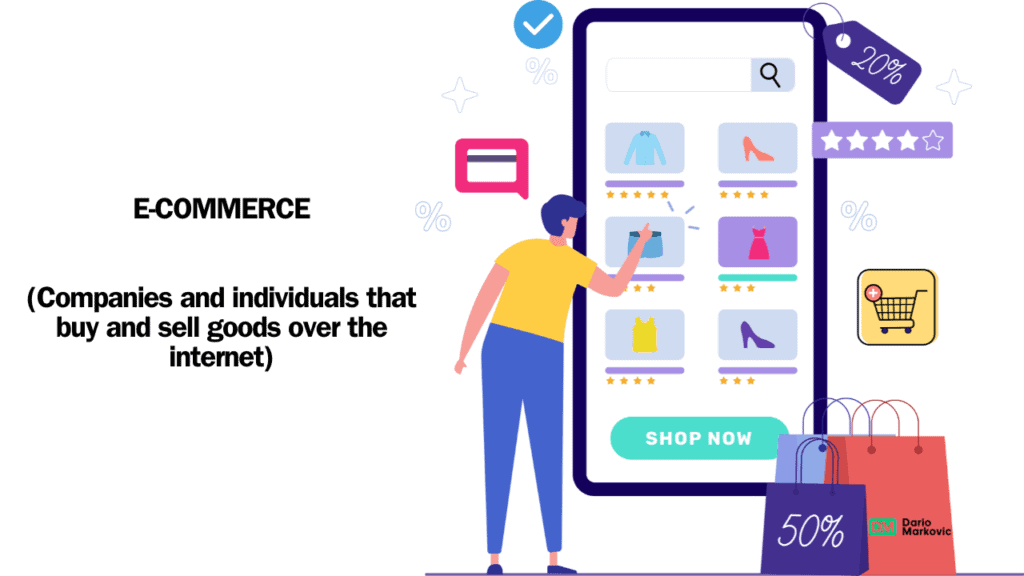
Traditional marketplaces are usually local, in-person events, such as flea and farmer’s markets.
However, small and large businesses can now compete against each other in online marketplaces like Amazon, eBay, Alibaba, eBay, Google Shopping, and more.
The difference between an ecommerce platform and a marketplace is that the latter sales channel offers multiple products and brands, allowing customers to search and compare price points.
Types of Traditional Marketplaces
- Specialty Stores
They are actually the physical stores which customers visit to view and buy goods. Examples include small family-owned shops or big multinational retail chains.
Examples:
- Walmart: A global retail giant offering a wide range of products from groceries to electronics.
- Target: Another major retail chain in the U.S., known for its affordable and stylish products.
- Macy’s: A department store chain in the U.S. that offers clothing, accessories, and home goods.
- Tesco: A leading UK supermarket chain offering groceries, clothing, and electronics.
- Specialty Stores
These markets usually exist where bulk goods are sold, largely to retailers or other businesses rather than directly to individual consumers. The prices are usually lower, with transactions involving larger quantities.
Examples:
- New Covent Garden Market (UK): A wholesale market in London known for fresh fruits, vegetables, and flowers.
- Tsukiji Market (Japan): Formerly the world’s largest fish market, Tsukiji was famous for its wholesale seafood auctions.
- Yiwu International Trade Market (China): One of the largest wholesale markets in the world, offering everything from small commodities to electronics.
- Specialty Stores
Flea markets are outdoor or indoor markets that sell secondhand goods, collectibles, handicrafts, and antiques. They usually occur during weekends and receive bargain hunters and collectors as their typical customers.
Examples:
- Brooklyn Flea (USA): A well-known flea market in New York offering vintage clothing, antiques, and handmade items.
- Portobello Road Market (UK): Famous for antiques, this market in London also offers clothing, food, and various other goods.
- El Rastro (Spain): Madrid’s most famous flea market, offering a wide range of second-hand items.
Types of eMarketplaces
- Specialty Stores
These are broad, online platforms offering a wide variety of products across multiple categories. It is like a digital storefront in retail, integrating buyers and sellers across the globe.
Examples:
- Amazon: The largest online marketplace globally, offering everything from books and electronics to clothing and groceries.
- eBay: An online auction and shopping website where people and businesses buy and sell a wide variety of goods and services.
- Alibaba: A Chinese e-commerce platform that connects manufacturers with buyers, primarily in the B2B space, but also offers consumer retail.
- Specialty Stores
These represent marketplaces centered on specific product categories or targeting certain consumer demographics. They usually serve specialized interests or needs and may include products that one would otherwise not find on general platforms.
Examples:
- Etsy: A global online marketplace focused on handmade, vintage items, and craft supplies. Popular for unique, artisanal goods.
- Houzz: An online platform for home remodeling and design, offering products, ideas, and professional services.
- StockX: A marketplace for buying and selling sneakers, streetwear, electronics, and collectibles with a focus on authentication and resale value.
- Specialty Stores
These platforms cater to businesses looking to source goods or services from other businesses. Very often, they involve bulk transactions and are vertical to specific industries.
Examples:
- ThomasNet: An industrial sourcing platform that connects manufacturers and suppliers with businesses in need of products or services.
- Alibaba: In addition to its consumer-facing services, Alibaba serves as a major B2B marketplace, connecting businesses with suppliers from around the world.
- Made-in-China.com: A B2B platform that connects global buyers with Chinese manufacturers and suppliers across various industries.
How to use this channel in your sales strategy:
Create an account on the site you’d like to use and set up your in-platform shop. This may require linking to your product catalog, WooCommerce or Shopify store, or individual product pages you’d like to promote and sell.
3. Social Media Marketplaces
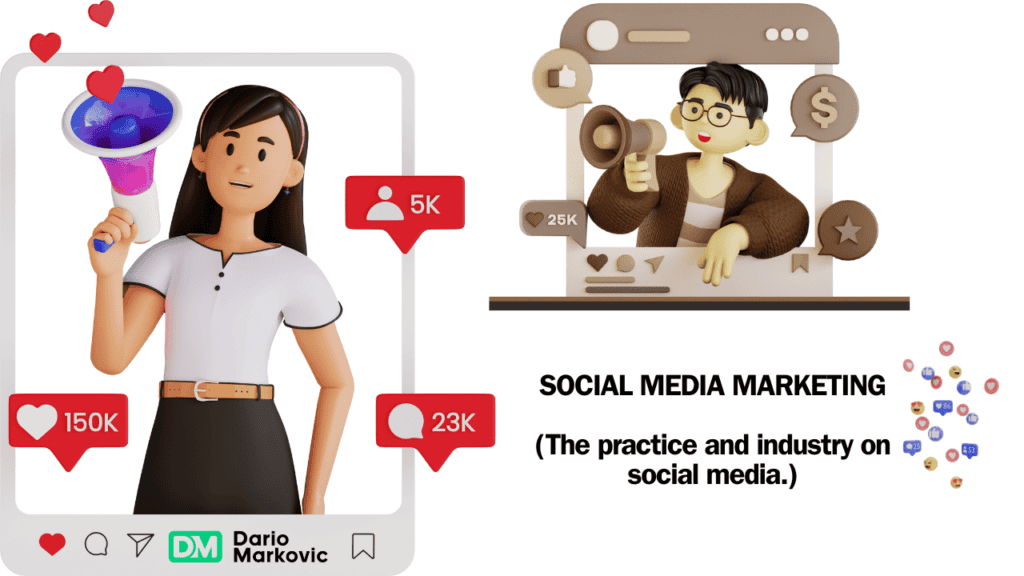
Modern social media marketplaces such as Facebook Shops, Instagram Shopping, Pinterest Shops, and TikTok Shop are gaining popularity.
These social shops exist online, where thousands of users log in and congregate daily.
Types of Social Media Marketplaces
Social media marketplaces involve an emerging channel for the intensive purchase and sale of products directly within social media platforms.
These marketplaces leverage the huge extent and deep engagement on social networks to let businesses and consumers, much less peers, conduct transactions among each other.
- Social Media Platforms with Integrated Marketplaces
With built-in shopping features, businesses do not have to install an additional app to execute all actions of browsing, discovering, and shopping for products. Businesses can set up their shops, tag their products in posts, and even manage transactions without exiting the platform.
Examples:
- Instagram Shops: Businesses on Instagram are in a position to set up storefronts right on the profile. One can browse and buy products. Further, with shoppable posts and Stories about to roll out, users will be able to purchase products without leaving the app.
- Usage: This feature is very popular with fashion, beauty, and lifestyle brands. Many influencers use shoppable tags while promoting products to their followers.
- Facebook Marketplace: Facebook’s peer-to-peer marketplace gives people a place to buy and sell items locally. The service is free, so users are able to list items for sale or peruse what others are offering in their area.
- Usage: As such, it is used majorly for selling secondhand goods, furniture, electronics, and cars. The owners of the businesses are also able to advertise new products.
- Pinterest Shopping: Pinterest has integrated shopping features through which users can buy things discovered on the platform. Businesses can upload product catalogs, while any particular entity is in a position to shop from Pins and boards.
- Usage: This will be very effective, especially on industries like fashion, home decor, and DIY crafts. A user can easily find items to buy that fit his or her personal style.
- Influencer-Driven Marketplaces
Influencers are central nodes in these marketplaces, where products are promoted and sold from their influence across their social media accounts. They will frequently work with brands in creating sponsored posts, which include direct links for the sale of featured products.
Examples:
- LIKEtoKNOW.it: A social shopping service to buy items posted by influencers on any platform, be it Instagram or YouTube. Simply screenshot an image and have the app identify and provide links to buy the items featured.
- Usage: It’s the go-to app for fashion and lifestyle influencers. It assists people in purchasing exactly the same items they come across over the internet.
- YouTube Merch Shelves: YouTube now enables creators to sell merchandise directly under their videos. The feature is integrated with merchandise partners like Teespring, allowing creators to promote and then sell things such as t-shirts, mugs, or other kinds of branded items.
- Usage: YouTubers selling branded merchandise to their audiences commonly use this term.
- Social Selling Platforms
It allows for selling directly from social media interactions. The focus of social selling is on relationship building and taping of one’s personal network to drive sales.
Examples:
- WeChat Shops: WeChat is a Chinese social media application that has implemented e-commerce functionality where businesses can create shops for selling products directly on the platform. WeChat Pay facilitates seamless transactions.
- Usage: Extensively used in China for everything from groceries to luxury items. Brands are often using WeChat as a channel to engage customers and drive sales through direct messages and mini-programs.
- TikTok Shopping: TikTok has innovated in-app shopping features. It created a seamless environment wherein one is prompted to buy products directly from videos. Businesses can set up product catalogs, and the user is able to buy items that are featured without having to leave the app.
- Usage: This is especially useful for trending products, fashion, and beauty items. Brands and influencers create engaging content to drive sales.
How to use this channel in your sales strategy: Much like creating an eMarketplace account, you’ll first have to open your social media business page and create your in-platform online storefront.
4. Organic and Paid Social Media

If you don’t want to try setting up an entire social media shop, you can focus on building your social media brand and funneling sales to your site. The poster child for this type of online sales strategy is Dollar Shave Club, which leveraged social selling to build a brand that sold for $1 billion to Unilever.
Types of Organic Social Media
Organic social media is the kind of free content shared by all users, including businesses, brands, and other entities, on their feeds or timelines and stories. This encompasses everything from posts and updates to images and videos, among others, and interactions in the form of comments and shares that happen organically, with no promotion of some sort.
In organic social media, the first step is awareness of the brand, making engagement with the audience, creating a community, and driving website or landing page visitors. That is, real relationships with your followers over time, growing a group of repeat buyers.
- Content Posting
It involves the act of posting frequent content on the user’s social media profiles. This may include simple text updates, images, videos, and links.
Examples:
- Blog Posts: Share links to your latest blog posts, which can help drive traffic to your website.
- Product Photos: Share high-resolution photos of your products and share them with your audience.
- Educational Content: Share tips, how-tos, and industry insights that drive value for your followers.
- Stories and Reels
Short-lived posts that disappear after 24 hours (Stories) and a longer form of vertical video (Reels).
Examples:
- Behind-the-Scenes: Share behind-the-scenes content to provide your followers with a sneak peek of your business.
- User-Generated Content: A reshare of content made by customers building community and credibility.
- Tutorials: Brief how-to videos demonstrating product uses or tips.
- Community Engagement
Engaging your audience with comments, likes, shares, and direct messages.
Examples:
- Comment: Be sure to reply to comments on your posts to encourage interaction and build relationships.
- Messaging: Sending replies to direct messages for customer service and support.
- Churn out engagement: Share related user-generated content or newsworthy items on your industry sector to consistently interest and engage with your audience.
- Live Streaming
The broadcasting of live video content in real-time.
Examples:
- Q&A Sessions: Engage your audience with live question-and-answer sessions.
- Product Launch: Stream the launch of your newest product to create hype and engagement.
- Webinars: Conduct interactive teaching or informative sessions on subjects of interest and importance to your audience.
Types of Paid Social Media
Paid social media refers to the placement of advertisements or sponsored content across social media. These may be in the form of display ads, promoted posts, video ads, among others. The target also includes people who share specific demographics, interests, and behaviors.
Key purposes of paid social media include raising brand awareness, driving visitors, capturing leads, and hence, boosting sales. Paid social aids businesses in extending their reach beyond the organic audience and targeting sub-segments of customers.
- Display Ads
This is a form of banner ad that will appear on social media platforms and is usually an image or video.
Examples:
- Facebook Ads: These are the sponsored advertisements that appear in the News Feeds, sidebars, and videos of users.
- Instagram Ads: These are visual advertisements within feeds and Stories that aim at high engagement.
- LinkedIn Ads: Display ads for professional orientation, appearing in the LinkedIn feed and sidebar.
- Promoted Posts
Increase organic posts through paid promotion to a wider audience.
Examples:
- Facebook Boosted Posts: When a regular post is promoted to increase its reach and engagement.
- Twitter Promoted Tweets: Place your tweet at the top of the users’ timelines and search results.
Instagram
- Sponsored Posts: Turning a post on Instagram into an ad that will be presented to individuals outside the initial follower group.
- Video Ads
Paid video content surfacing natively within social media platforms, meant to grab attention and engage audiences.
Examples:
- YouTube Ads: Pre-roll, mid-roll, and post-roll ads playing before, during, or after videos on YouTube.
- Facebook Video Ads: These are video ads within news feeds, stories, and in-stream within Facebook Watch.
- Instagram Video Ads: These are video ads running for a short duration and usually feature in feeds, Stories, and Reels.
- Carousel Ads
These ads have multiple images or videos that can be swiped through by users, with each having its own link.
Examples:
- Facebook Carousel Ads: ADS that show a collection of products or features in one ad unit.
- Instagram Carousel Ads: These are multi-image or video ads that offer users a more interactive experience.
- One for LinkedIn Carousel Ads: Business-oriented carousel ads designed for B2B marketing.
How to use this channel in your sales strategy: First, know your audience, which platforms they use, and what topics they care about. Then, involve yourself in the conversation there.
If you have a creative marketing team that can create Dollar Shave Club-quality content, all the better—but if not, your followers will appreciate helpful and insightful information, and later, when they need your solutions, they’ll think of you first.
5. B2B Sales Channels
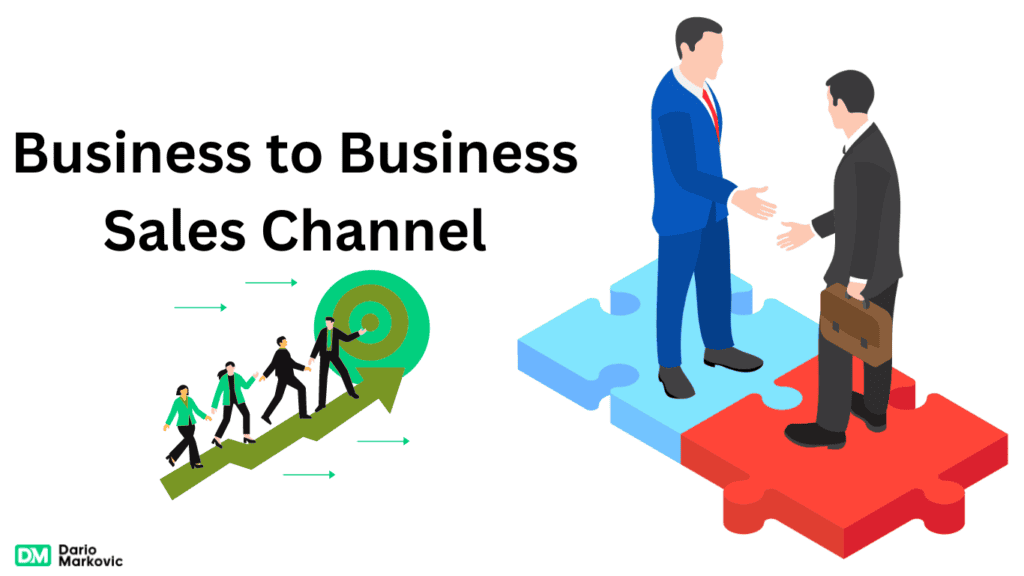
Business-to-business (B2B) sales involve selling your product or service directly to another business, using it in its work.
Examples include functional requirements to get work done (like office desks and computers), raw materials needed to produce a final product (like paper needed for printing books), and software or services (like accounting software).
Types of B2B Sales Channels
B2B sales channels are all the different ways and platforms through which businesses sell their products to other businesses. Contrasted with B2C selling, B2B selling is large in value; thus, their sales cycles are longer and based on relationships in the long term.
- Direct Sales
Sells products or services directly to businesses without intermediaries. It is a function running within an organization with the help of its own sales team or account managers. These representatives develop relationships with the clients, understand their requirements or needs, and deliver tailored-made solutions.
Developing close personal relationships with clients based on individual requirements—delivering tailored-made solutions and building long-term partnerships. You can find different types of direct sales which are field, inside, and account-based sales.
Examples:
- IBM: IBM’s direct sales force works with large enterprises to offer customized IT solutions and services, often involving long-term contracts and ongoing support.
- SAP: SAP sells its enterprise resource planning (ERP) software directly to businesses, with dedicated account managers handling the sales and implementation processes.
- Channel Sales
Channel sales is when you are selling your product or service through intermediaries like distributors, resellers, or value-added partners. For example, this might mean the partner has the task of selling the product to the final customer. In many cases, they will add their own services or solutions.
This is selling through channels in order to extend a business’s reach through the utilization of the networks and expertise of channel partners, thus scaling without having huge internal sales forces. The different types of channel sales are distributors, resellers, and Value-Added Resellers (VARs).
Examples:
- Cisco Systems: It sells its networking gear using a network of distributors and VARs, thereby giving itself the ability to reach the global market while it focuses on product development and support.
- Microsoft: Microsoft sells its software and cloud services through a large network of partners, which include resellers and VARs. In most cases, partners add consulting with implementation and support services around core Microsoft offerings.
- Inbound Marketing and Content Marketing
Inbound marketing pulls potential customers in through helpful content, search, social media, and other online channels. Essentially, it attracts leads that are quite interested in the product or service being offered, thus creating efficiency in the sales process.
Provide helpful information in the form of valuable content to customers and engage them to drive down the sales funnel. You can learn more from its different types which are content marketing, Search Engine Optimization (SEO), and webinars and virtual events.
Examples:
- HubSpot: Embracing the all-rounded content marketing effort, from blogs to eBooks, webinars, and more, brings on board businesses that express interest in their inbound marketing and CRM solutions.
- Salesforce: It does the same when it provides guides, case studies, and webinars to help people understand what CRM and cloud solutions can do for them. It is educating them so that they may eventually go into the sales process.
- Outbound Sales
Outbound sales means making an unsolicited offer with your product or service through various channels to your prospects, from cold calling and email campaigns to direct mail. This approach often serves businesses targeting ideal customer profiles.
To approach the prospects who are not actively searching for the product or the service but need it to successfully open new business opportunities. Outbound sales can be divided into 3 categories: cold calling, email outreach, and direct mail.
Examples:
- Gartner: Their sales team employs outbound strategies—cold calls and email outreach—for the exposure of businesses to their research and advisory services, hence generating further leads for engagement.
- Oracle: Oracle utilizes outbound sales to target key decision-makers at large enterprises in order to promote enterprise software and cloud solutions through personalized outreach.
How to use this channel in your sales strategy:
If your product or service is ideal for professional use, develop an ideal customer profile for your B2B customers, and begin identifying leads and targeting them with B2B sales strategies. Check our guide to the ultimate B2B ecommerce trends to watch in 2024.
6. Direct-to-Consumer
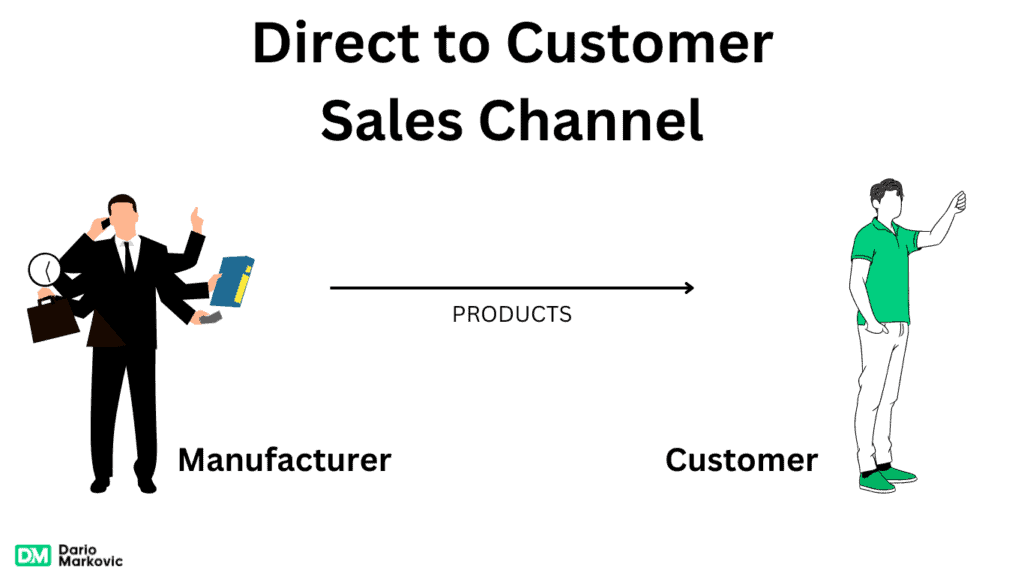
With direct-to-consumer (DTC) sales, your customers have no other option but to buy directly from you.
DTC strategies rely heavily on providing high-quality goods and services and a fantastic customer experience. They lean on word-of-mouth marketing and a hefty marketing budget to attract new customers.
Types of Direct-to-Consumer Sales Channel
Direct-to-consumer sales channels are those through which products are sold directly to consumers, excluding wholesalers, distributors, or retailers. This allows a brand full charge of its customer experience, pricing, and branding while building direct relationships with its customers.
- Brand Website
The most pervasive DTC channel is a brand’s own website. That is where customers can view products, get an education, and engage in a direct-to-consumer transaction with the brand itself. This provides end-to-end control over the customer experience, from the presentation of products to checkout.
To drive a line of communication directly between it and consumers, drive control of the brand narrative, and optimize the shopping experience toward conversions and customer loyalty.
Examples:
- Warby Parker: An eyewear brand that disrupted the traditional retail model by selling glasses directly to consumers through its website, offering virtual try-ons and home try-on programs.
- Glossier: A beauty brand that built a strong online community and sells its products exclusively through its own website, leveraging customer feedback to develop new products.
- Casper: A mattress company that popularized the DTC model in the sleep industry by selling high-quality mattresses directly to consumers online, bypassing traditional retail stores.
- Mobile Apps
Mobile apps offer a dedicated platform through which customers can shop directly from their smartphones or tablets. Apps are very often likely to give a more personalized and seamless shopping experience in comparison with the mobile websites.
To increase engagement and loyalty with customers by giving them the convenience and ease of use, a friendly shopping experience for all mobile users.
Examples:
- Nike: Nike’s app offers personalized shopping experiences, exclusive product drops, and loyalty rewards, driving significant sales through mobile.
- Sephora: The beauty retailer’s app integrates with its loyalty program, offering personalized product recommendations, virtual try-ons, and in-app purchasing.
- Starbucks: While primarily a coffee chain, Starbucks’ app is a powerful DTC tool, allowing customers to order and pay in advance, collect rewards, and receive personalized offers.
- Subscription Services
Subscription services allow consumers the opportunity to experience products on a regular, recurring basis, generally involving home delivery. This model works especially well in the case of consumables and low-consideration niche products.
To generate predictable revenue streams by creating customer loyalty, offering them convenience, and keeping them continuously engaged.
Examples:
- Dollar Shave Club: A pioneer in the subscription box model, Dollar Shave Club offers regular deliveries of razors and grooming products directly to consumers.
- Blue Apron: A meal kit delivery service that provides pre-portioned ingredients and recipes, catering to busy consumers who want to cook at home.
- Birchbox: A beauty subscription service that sends a curated box of sample products to subscribers each month, allowing them to discover new brands and products.
How to use this channel in your sales strategy:
Ensure your website, online sales, and customer service functions are fully functional and user-friendly. Then, promote, promote, promote. Put your brand and products on full display with various strategically targeted marketing campaigns.
7. Sales Agents and Brokers
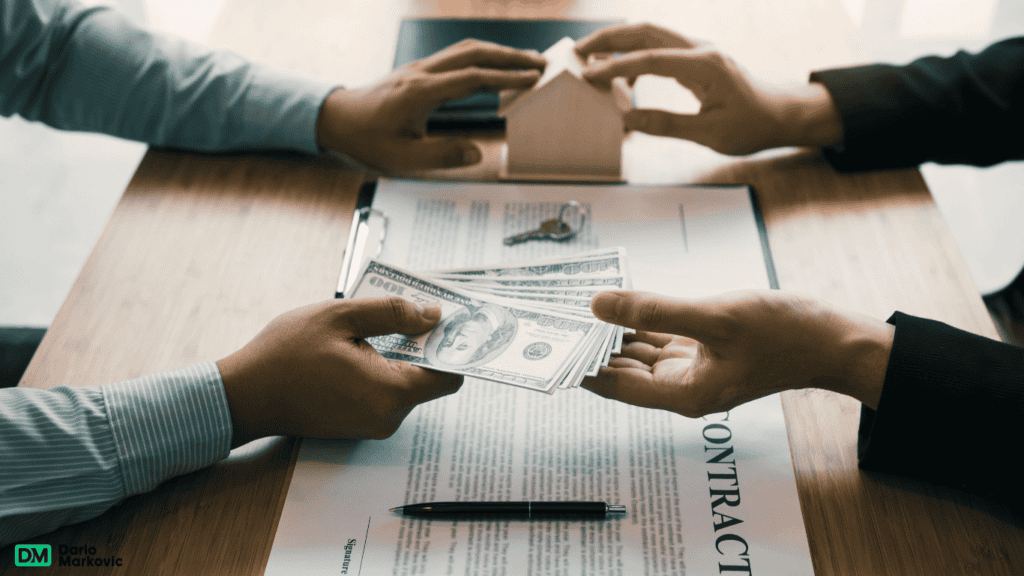
Sales agents and brokers earn a commission based on the deals they help you close. Sales agents are companies or people that sell your products or services to customers on your behalf. You can work with a sales agent continually.
Brokers do similar work and will bring eligible and qualified leads or customers to you to help broker a deal. However, working with a broker is usually a short-term relationship during a one-time deal–think of a real estate or franchise broker, for example.
Types of Sales Agents and Brokers Sales Channel
These are intermediaries between a manufacturer or any service provider and their customers. Unlike the direct sales team, they are often representatives of several companies that extend their network and expertise to gain a market.
They are especially good in those areas where specialized knowledge or contacts may be required to close a sale.
- Independent Sales Agents
Independent sales agents, also known as manufacturer’s representatives or just reps, are individuals or firms who are on a mission to sell the products of one or more companies. Most of the time, they work on a commission basis while simultaneously growing relationships within a specified industry.
A company’s reach, without keeping an in-house large sales force, is increased by independent agents: Independent agents bring invaluable market knowledge and established networks that can let a business penetrate new regions or industries.
Examples:
- Johnstone Supply Representatives: In the HVAC (heating, ventilation, and air conditioning) industry, independent sales agents represent Johnstone Supply’s products to contractors, ensuring broad market coverage.
- Avon Sales Representatives: Avon uses independent sales agents who sell beauty and personal care products directly to consumers, often through home-based sales and personal networks.
- Industrial Equipment Reps: In the industrial sector, companies like Caterpillar use independent sales agents to sell heavy machinery and equipment to construction and mining companies.
- Brokers
Brokers are transaction partners between the buyer and seller in industries characterized by transactions that are too complicated or heavily regulated, such as real estate, insurance, or commodities. The broker does not take ownership of goods or services involved in the transaction, but makes it happen for a commission.
Brokers are specialized to bring together buyers and sellers who otherwise would not find each other. They do so through being experts in using their networks to find the best way for a transaction to be executed quickly and with success.
Examples:
- Keller Williams Realty: A large real estate brokerage where agents connect buyers and sellers, guiding them through the complexities of property transactions.
- Aon Insurance Brokers: A global insurance broker that helps businesses find the best insurance policies to cover their risks, negotiating terms with multiple insurance companies.
- Goldman Sachs Commodity Brokers: Specialize in trading commodities, connecting producers and buyers while managing the financial and logistical aspects of the trade.
- Franchised Agents
Franchised agents sell products or services of a larger company under its brand and business model in a specific territory. Such agents share the advantages of brand recognition and support from the franchisor, all while conducting their sales activities independently.
Satisfying the desire to get more coverage of the company through local agents operating to some extent on an independent basis, utilizing the power of a known brand but localizing effort.
Examples:
- McDonald’s Franchisees: Operate under the McDonald’s brand, selling food and beverages within a designated territory while benefiting from the company’s marketing and operational support.
- RE/MAX Real Estate Agents: Operate under the RE/MAX brand, providing real estate services in their local markets while benefiting from the company’s global reputation and resources.
- H&R Block Tax Preparation: Franchisees offer tax preparation services under the H&R Block brand, leveraging the company’s established systems and customer trust.
- Export/Import Brokers
Export-import brokers specialize in facilitating international goods transactions. They help companies overcome the insecurities involved in cross-border transactions, including compliance with regulations, customs, and logistics. To act between a domestic seller and a foreign buyer or vice-versa to ensure that international transactions are completed smoothly and legally.
Examples:
- Maersk Brokers: Specialize in the shipping and logistics of goods across international borders, handling everything from customs documentation to freight forwarding.
- Global Trading Group: Acts as an import/export broker for various goods, connecting buyers and sellers across different countries while managing regulatory and logistical challenges.
- TradeKey: An online platform that connects importers and exporters, with brokers helping to facilitate the transactions between international businesses.
How to use this channel in your sales strategy:
Find sales agencies and business brokers specializing in your industry, negotiate the terms of your agreement, sign on the dotted line, and watch the leads or sales come in.
8. Partnerships

‘Partnerships’ is a general term that involves forming a relationship with someone to help sell your products. Influencers, affiliate marketers, resellers, and channel partners are all examples of partners. In all cases, your partners will earn some sort of payment or commission for an agreed-upon action taken by their followers, such as a click to the product page, a free trial sign-up, a 6-month subscription, or a full and complete sale.
Types of Partnerships Sales Channel
The Partnerships Sales Channel describes collaboration between two or more businesses that jointly market, sell, or distribute a product or service. These can be structured as strategic alliances, co-branded joint ventures, and channel partnerships.
This allows companies to use the assets of the different firms involved in gaining access to new markets and improving competitive positioning by sharing resources better.
- Strategic Alliances
Strategic alliances are formal agreements that outline how companies will cooperate on specific projects, products, or marketplace opportunities. These alliances are usually long-term and often require that a company share resources, knowledge, and expertise with another firm in order to achieve mutual goals.
To pool strengths and capabilities—technological, market access, or R&D—to gain new opportunities where neither company could have gone before.
Examples:
- Spotify and Uber: Spotify partnered with Uber to allow riders to control the music played during their ride through their Spotify account, enhancing the user experience for both platforms.
- Starbucks and Barnes & Noble: Starbucks operates coffee shops within Barnes & Noble bookstores, driving foot traffic and sales for both companies.
- Toyota and BMW: These automotive giants formed an alliance to collaborate on the development of hydrogen fuel cells, lightweight technologies, and vehicle electrification.
- Joint Ventures
A joint venture is a business agreement by which two or more companies come together to form a new entity, jointly owned, for the purpose of executing a particular business project or activity. JVs provide partner companies with the chance to pool their resources and expertise while sharing profits and risks.
It means the setting up of an independently operated entity jointly by two or more companies for the purpose of pursuit of a certain business objective, like entry into a new market, development of a new product line, or execution of large scale projects, thereby sharing the overall financial and operational burden.
Examples:
- Sony Ericsson: A joint venture between Sony and Ericsson that combined their expertise in consumer electronics and telecommunications to create a successful line of mobile phones.
- Hulu: Originally a joint venture between NBC Universal, Fox, and Disney, Hulu was created to compete in the online streaming market, pooling content and resources from multiple networks.
- Siemens and Nokia: Siemens and Nokia formed a joint venture, Nokia Siemens Networks, to combine their telecommunications infrastructure businesses and compete in the global market.
- Affiliate Partnerships
Affiliate partnerships involve one company promoting another’s products or services in exchange for a commission on sales or leads generated through their marketing efforts. This model is common in online marketing, where bloggers, influencers, and websites promote products through affiliate links.
Its function is to drive sales and increase brand exposure by leveraging the marketing efforts of affiliates, who are incentivized to promote the company’s products to their audience.
Examples:
- Amazon Associates: Amazon’s affiliate program allows bloggers, influencers, and websites to earn commissions by promoting Amazon products through affiliate links.
- Shopify Affiliates: Shopify’s affiliate program rewards partners for referring new customers to the Shopify platform, with commissions based on the subscription plans chosen by the referred customers.
- Travel Affiliate Programs: Companies like Booking.com and Expedia have affiliate programs where travel bloggers and websites earn commissions for bookings made through their affiliate links.
- Licensing Partnerships
Licensing partnerships are when a company allows another entity to use its brand name, logo, or product design in exchange for royalties or licensing fees. This allows the licensor to expand the reach of a brand without having to manufacture and sell the actual product.
Its purpose is to use intellectual property for licensing to permit another firm to make and sell the products under the brand name of the licensor, thereby entering new markets and increasing visibility.
Examples:
- Disney and Hasbro: Hasbro holds the licensing rights to produce toys and games based on Disney’s characters, allowing Disney to capitalize on its intellectual property while Hasbro expands its product line.
- NFL and Nike: Nike has a licensing agreement with the NFL to produce official NFL-branded apparel, extending Nike’s reach into the sports merchandise market.
- Coca-Cola and McDonald’s: McDonald’s has the exclusive rights to serve Coca-Cola beverages in its restaurants, benefiting from Coca-Cola’s brand while driving beverage sales.
How to use this channel in your sales strategy: Based on the product or service you sell, decide which type of partner makes the most sense. Do some digging to see which partners are at the top of the game in your industry, and work your way down the list to reach out, see what their partnership agreements look like, and find the best fit for your product.
9. Personal Selling Channels
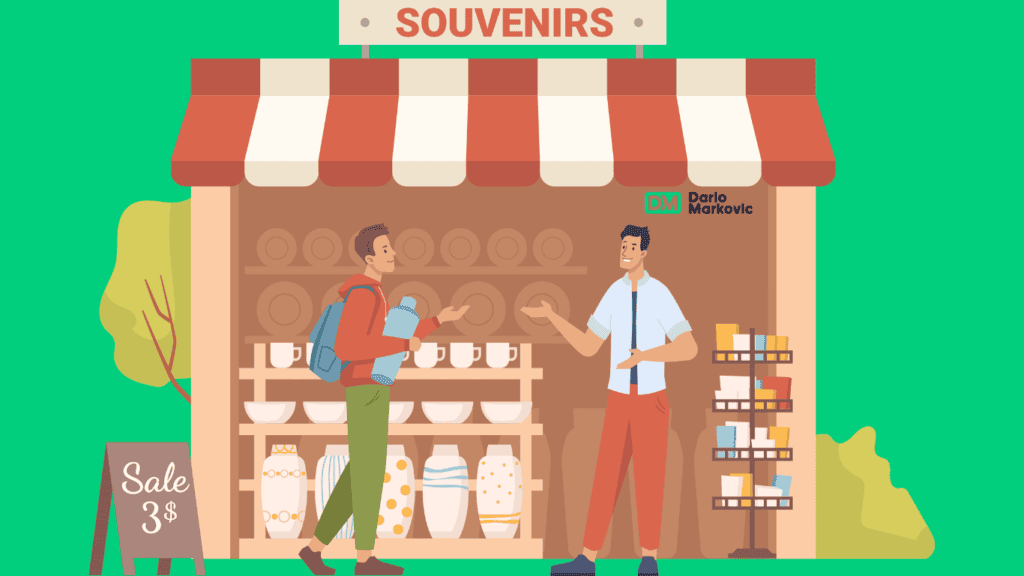
Personal selling channels involve one-on-one interactions between a salesperson and a potential customer. These could be in person, over the phone, or via video chat. The goal is to build a relationship, understand the customer’s needs, and then tailor the sales pitch to address those needs.
Types of Personal Selling Sales Channel
Personal selling is a direct approach to face-to-face selling where a salesperson meets a prospect customer directly to persuade him to buy a certain product or service. It is one of the efficient sales channels in those products that need demonstration, explanation, or customization. It much relies on the selling abilities of the salesperson in building relationships, comprehending customer needs, and closing deals.
- Direct Sales
Direct sales involve selling products directly to consumers without intermediaries. This can occur in various settings, such as door-to-door sales, home parties, or one-on-one meetings. The salesperson interacts personally with the customer, providing demonstrations, answering questions, and closing the sale.
To engage with customers on a personal level, tailoring the sales pitch to individual needs and building trust to drive sales.
Examples:
- Avon Representatives: Avon uses a direct sales model where representatives sell beauty and personal care products directly to customers, often through home visits or community events.
- Cutco Cutlery: Cutco uses direct sales to demonstrate and sell high-quality kitchen knives, with salespeople visiting homes to showcase the products’ features and benefits.
- Tupperware Parties: Tupperware products are sold through in-home parties where a salesperson demonstrates the products to a group of potential customers, encouraging social engagement and sales.
- Consultative Selling
Consultative selling is a method of selling where the salesperson becomes an advisor to the customers in respect to their needs and suggests those solutions of the offering mind that best befit the needs identified. This method is centered on long-term development relations rather than just closing sales due.
It simply intends to deliver value to the customer by finding the problems he is facing and suggesting solutions that best fit the customer at that time, hence building trust and creditworthy.
Examples:
- IBM Consulting Services: IBM sales representatives use consultative selling to understand the IT needs of businesses and recommend customized technology solutions that align with their goals.
- Pharmaceutical Sales Reps: Pharmaceutical companies often use consultative selling to educate doctors about new medications, providing scientific data and patient benefits to support their recommendations.
- Financial Advisors: Financial advisors employ consultative selling to assess clients’ financial situations and recommend investment strategies, insurance products, and retirement plans that suit their needs.
- Inside Sales
Inside sales refer to the selling of products or services remotely, usually through a phone call, email, or online meeting, rather than face-to-face encounters. This model has, over the years, grown in popularity with the surge of digital communication tools since they let salespeople reach a large potential customer base efficiently.
It means engaging customers, informing them, and then closing the sale without getting them to meet in person using digital communication tools.
Examples:
- SaaS Sales: Software-as-a-Service (SaaS) companies often use inside sales teams to sell subscriptions to their platforms, using phone and email to engage with potential customers and conduct product demonstrations.
- Telemarketing: Companies use inside sales techniques in telemarketing to reach out to potential customers, present offers, and close sales remotely.
- Business Development Representatives (BDRs): BDRs in many industries use inside sales to qualify leads, schedule appointments, and advance prospects through the sales funnel.
How to use this channel in your sales strategy:
To use personal sales channels effectively, understand your audience, choose suitable channels like meetings or emails, personalize your approach, follow up consistently, listen actively, track performance, and integrate with other channels. This ensures tailored engagement, builds relationships, and drives sales success.
Deciphering Your Customer Service Software Needs
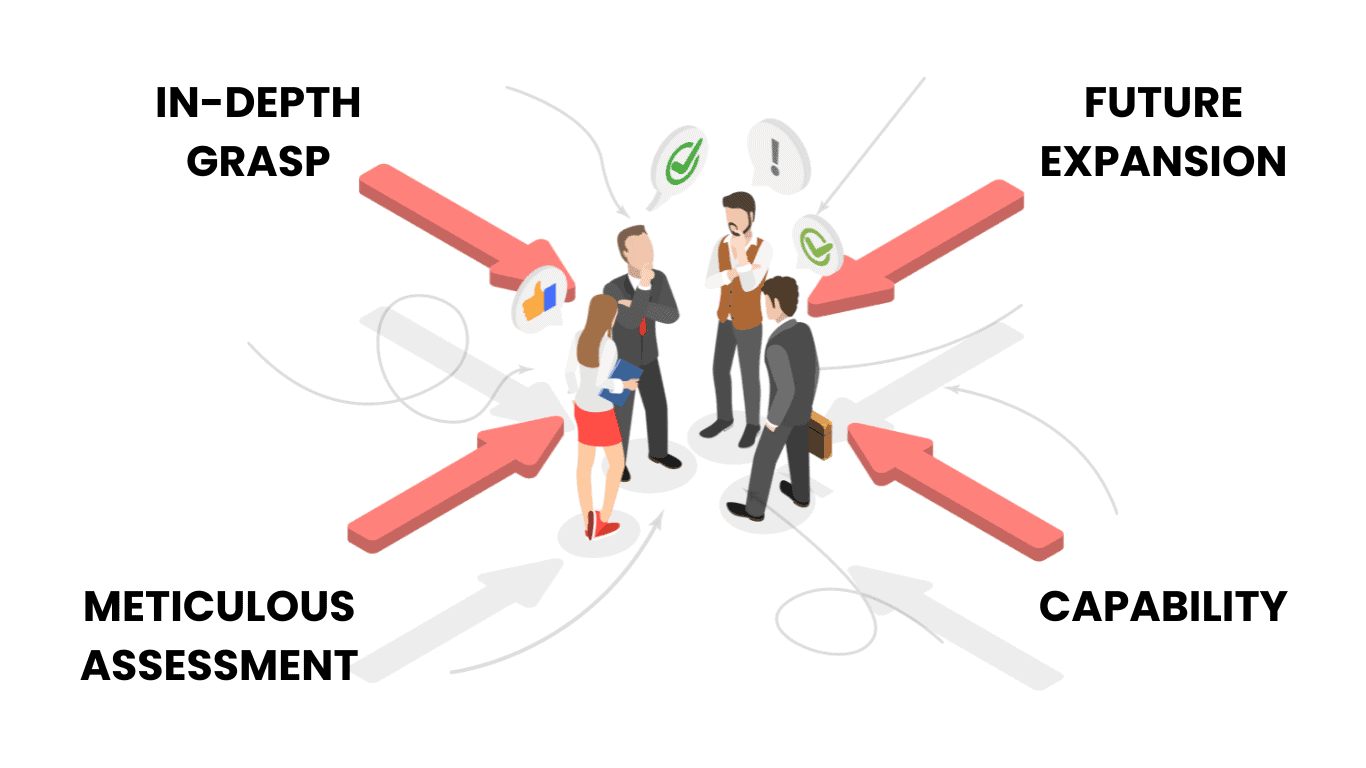
How to Develop a Multi-Channel Sales Strategy
We now know the what and why of channel sales. So, let’s examine how your business can create and manage them.
If you’re interested in channel sales, the first step is to determine the purpose of your future sales channels.
Don’t invest time and money in channel sales without a clear directive; otherwise, those resources will go to waste.
Understand Your Products, Services, and Channels
Before expanding your sales channels, you must deeply understand your products, services, and existing channels.
What are your top-selling products? Which channels are driving the most revenue?
You’ll also want to make sure your CRM allows for customizable data fields and activities so you can track conversions by channel.
Apply Channel Knowledge to New Opportunities
Once you have a solid grasp of your current sales channels, look for new opportunities.
Could you reach untapped markets or customer segments with a new channel?
For example, if you primarily sell through brick-and-mortar stores, maybe it’s time to launch an online store. You could expand to marketplaces like Amazon or eBay if you’re already selling online.
Establish Channel Partnerships
If you’re going to succeed with multi-channel sales, you can’t do it alone. You’ll need to establish partnerships with other businesses that can help you reach new customers.
This could include partnering with a complementary brand for a co-marketing campaign or working with a distributor to get your products into new stores.
Incentivize Channel Partners
Your channel partners are key to your success, so you need to keep them motivated.
Offer incentives like exclusive discounts, early access to new products, or co-op marketing funds.
You should also provide regular training and support to help your partners sell more effectively.
The more successful they are, the more successful you’ll be.
Track Sales Channel Performance
As you expand into new sales channels, tracking your performance is crucial.
Which channels are generating the most revenue? Which ones have the highest conversion rates?
Use this data to optimize your sales strategy and focus on the most effective channels. Don’t be afraid to cut ties with underperforming channels so you can focus your resources where they’ll have the biggest impact.
Maintain Partner Communication
Finally, don’t forget to maintain regular communication with your channel partners.
Keep them up-to-date on new products, promotions, and any changes to your sales process.
Schedule regular check-in calls or meetings to discuss performance, share best practices, and brainstorm new ideas.
The more you collaborate with your partners, the stronger your relationships will be.
Choosing the Best Sales Channels for Your Business in 2024
Shopping channels can be beneficial ways to broadcast and sell your products.
They can extend your reach beyond its normal parameters and allow you to reach out to new consumers and those who previously would not have come across your line of products.
You can also use shopping channels to compare products, which helps you get the best deal when purchasing a product.
Agents, Representatives, and Distributors
Working with agents, representatives, and distributors can be a great option if you’re looking to expand your reach and tap into new markets.
These intermediaries can help you sell your products to customers you might not be able to reach on your own.
When choosing an agent or distributor, look for someone with experience in your industry and a proven track record of success.
They should also have strong relationships with the retailers or businesses you want to target.
Export Intermediaries
Export intermediaries can be a valuable resource for expanding internationally.
These companies specialize in helping businesses navigate the complexities of selling products overseas.
They can help you with everything from market research and product localization to shipping and customs clearance.
Some popular export intermediaries include export management companies and export trading companies.
eCommerce Platforms
Of course, no discussion of sales channels would be complete without mentioning eCommerce platforms.
In 2024, online sales are expected to account for 22% of all retail sales worldwide.
If you’re not selling online, now is the time to start. There are countless ecommerce platforms, including giants like Amazon and eBay and smaller niche marketplaces.
When choosing an eCommerce platform, consider factors like fees, audience size, and competition in your product category. You’ll also want to ensure the platform integrates with your existing systems and processes.
Key Takeaway:
Start by nailing down why you’re adding new sales channels—don’t waste resources without a clear goal. Know your products and where they shine, then explore fresh markets or customer segments.
Forge strong partnerships for broader reach and keep those partners motivated with perks. Always track how each channel performs to focus on winners and stay in tight communication with partners to grow together.
Dario's Takeaways
So 9 sales channels can take your business to new heights. The possibilities are endless, from social media marketplaces to old-fashioned brick-and-mortar stores.
But here’s the thing: simply having multiple sales channels isn’t enough. You need a solid strategy to make them work together like a well-oiled machine.
That means understanding your products, partnering with the right people, and tracking your performance like a hawk.
It might initially seem overwhelming, but the payoff is worth it. With a killer multi-channel sales strategy, you’ll be able to reach more customers, boost your revenue, and build a brand that stands out from the crowd.
So what are you waiting for? Get out there and start exploring new sales channels. Your business (and your wallet) will thank you.
Frequently Asked Questions
E-commerce platforms can boost your business by providing a global marketplace for your products, offering easy setup and management, and integrating various payment and shipping options. They also enable you to reach a vast audience without the need for a physical storefront.
Social media is an effective sales channel because it allows you to connect with a large and diverse audience, build brand awareness, and engage with customers in real-time. It also provides tools for targeted advertising and analytics to measure the effectiveness of your campaigns.
Email marketing benefits include direct communication with potential and existing customers, personalized messaging, automation capabilities, and measurable results. It helps nurture leads, build customer loyalty, and drive repeat business.
Affiliate marketing is a performance-based strategy where affiliates promote your products and earn a commission on sales generated through their efforts. It increases sales by leveraging the reach and influence of affiliates, who can bring in new customers and enhance your brand’s credibility.
Retail stores play a crucial role in a multi-channel sales strategy by providing a physical location for customers to experience your products, receive personalized service, and make purchases. They complement online channels and help create a cohesive, omnichannel shopping experience.



